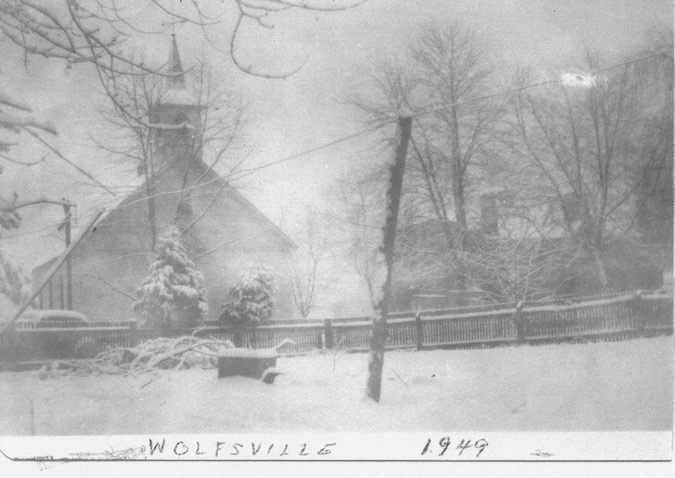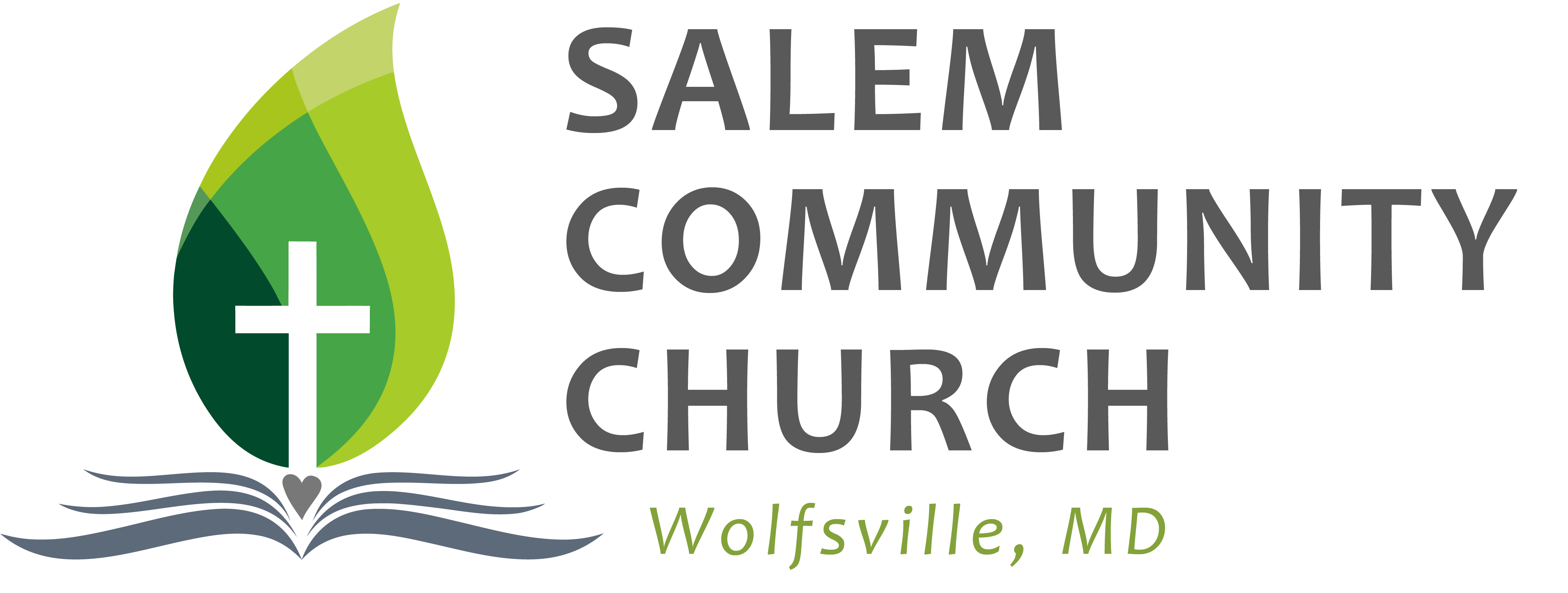History of Salem Church
Chapter 1. Early Beginnings in Wolfsville
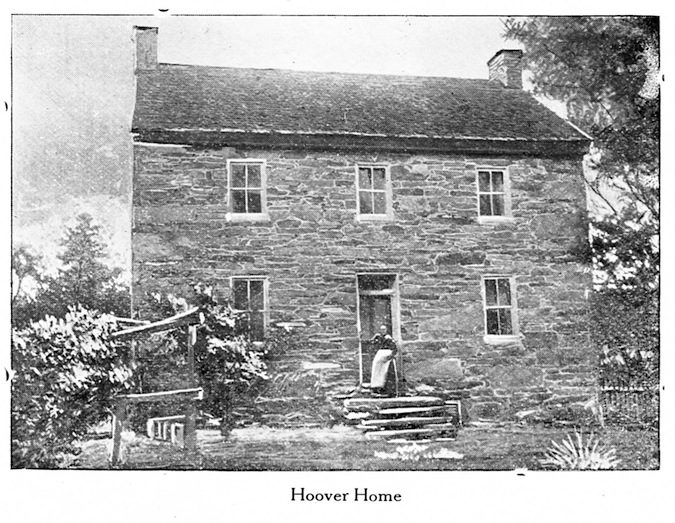
The congregation of Salem Church, in the small rural community of Wolfsville, Frederick County, Maryland, began worshiping together in 1819. Since there were almost no church buildings, and only a few schoolhouses at that time, this small group of believers began meeting at the homestead of John Hoover II (1777-1861) and his wife, Susannah Harshman Hoover (1784-1845) in Wolfsville.
At that time, the congregation belonged to a denomination called the United Brethren in Christ. This, the first American-born denomination, was founded only 19 years before, in 1800, in Frederick, Maryland, by four men named Philip Otterbein, Martin Boehm, George Adam Geeting, and Christian Newcomer.
In its early years, the Salem congregation was served by United Brethren “circuitriders,” or traveling evangelists. Among those was Bishop Christian Newcomer, who, because of his missionary zeal and his amazingly extensive travels on horseback to carry the Gospel of Christ to settlements east and west of the Alleghenies, has come to be known as the “Apostle Paul” of the United Brethren in Christ Church.
Today, Christian Newcomer’s home still stands near Beaver Creek in Washington County. A plaque along Route 40 (in front of the home) marks the site. The plaque reads, “CHRISTIAN NEWCOMER HOME – Christian Newcomer, 1749-1830, was one of the founders of the Church of the United Brethren in Christ, the first American-born denomination. He moved to Washington County in 1775 and, in his journal, described crossing the Allegheny Mountains 38 times as a circuit riding preacher to spread the gospel. He was called the St. Paul of the church.”
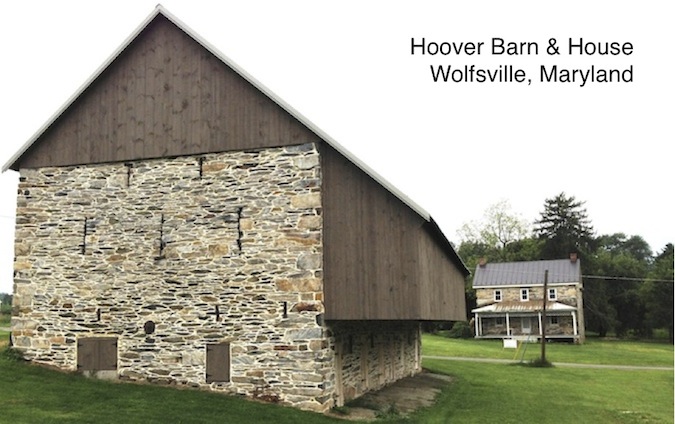
Pioneer United Brethren in Christ preachers found a warm welcome from the Salem congregation at the home of John and Susannah Hoover in Wolfsville, and it became a regular preaching place.
Most of the services were conducted in the Hoover house, a substantial stone structure, located only a short distance from the present-day Salem Church building.Pioneer United Brethren in Christ preachers found a warm welcome from the Salem congregation at the home of John and Susannah Hoover in Wolfsville, and it became a regular preaching place.
The “big meetings” were held in the Hoover barn (built in 1819), located across the road from the house. The Hoover house and barn still stand at the corner of Harp Hill Road and Wolfsville Road.
An early 1940’s article written by Cecil R. Martin, explained Wolfsville’s early beginnings this way: According to published historical accounts, early members of the Salem congregation were John Hoover, Elizabeth Hoover, John Hoover II, Susannah Harshman Hoover, Jacob Hoover, Mary Hoover. Besides the Hoovers, other founding families included the Millers, Riders, Coats, Beelers, Eckstines, and Passes.
John Hoover was the first man to settle permanently at Wolfsville. He was the son of Johannes Huber, who emigrated to America from Switzerland in 1732. This original Swiss emigrant was a brother of Andreas Huber, the direct ancestor of former President Herbert Hoover.
According to the living descendant, John Hoover was the owner of a vast tract of land around Wolfsville. It was his son and namesake who built the Hoover Barn and Hoover House, standing at the south end of the village. These venerable stone buildings, erected in 1819 and 1820 respectively, have attained county-wide fame as the birthplace of the Wolfsville United Brethren Church in the days of the traveling evangelist, Christian Newcomer.
In the United Brethren cemetery, situated on a hillside one-half mile from the village, are two simple stone markers on which are respectively written: John Hoover, 1753-1824 and Susan Hoover, 1753-1823. This man and his wife, the original Catoctin District Hoovers, were the first persons to be buried in this cemetery.
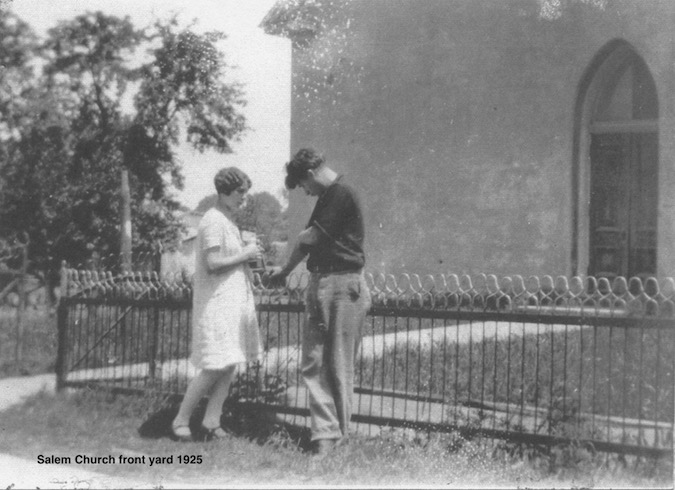
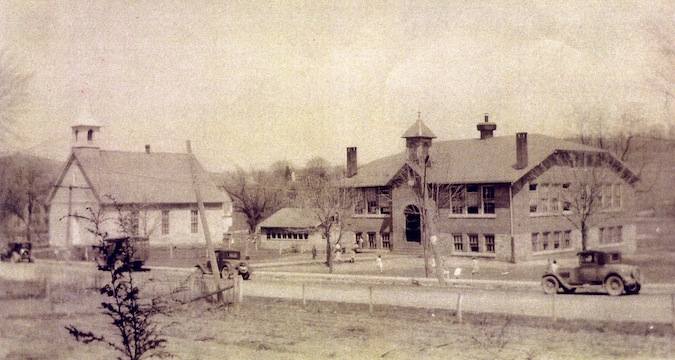
The above photo shows Wolfsville in 1930
From left, Salem Church; the “Peepie Coop” which housed first grade students (formerly Poplar School near Grossnickle Church, later Phillips Delight, the very last one-room school in Frederick County); and Wolfsville School, removed April 30, 1970, to make way for Salem’s parsonage. (Photo courtesy of Leah Spade.)
The Wolfsville School, shown in the above photo, was built in 1914. An August 7, 1914, article in The Valley Register newspaper gave this account of the building project. “WOLFSVILLE SCHOOL CONTRACT AWARDED — The Board of County School Commissioners has awarded to Elmer C. Brandenburg, of Wolfsville, the contract to erect a four-room brick school house at Wolfsville, at a bid of $6,000. The building is to be completed by January 1, 1915. Other bids were Upton W. Palmer, $6,780; Harlan W. Hagan, $8,135; and Hahn and Betson, $9,195. The Wolfsville building will contain a basement to be used for an assembly hall for the school and also for community purposes. This basement is to have ceilings nine feet high and a portion of it will be underground. The floor above will be used for school purposes and this will be divided into four rooms. The windows are to be of the same type as used in the schools of Frederick, being so arranged that the sash may be opened in the center for ventilation or opened at top and bottom, this being made possible by the use of a special patented device. The building is to contain a tower and the structure promises to be one of beauty. It was designed by Architect B. Evard Kepner, of Frederick. The building will occupy a site adjoining the United Brethren Church, and about four acres of land has been secured as the school playgrounds. The site is considered an excellent one. Mr. Brandenburg is a well known contractor of Wolfsville, and he began work upon the foundation last Monday. His residence adjoins the grounds upon which the building will be erected.”
In the photo below, Salem Church is on the left and the Wolfsville School on the right. A Wolfsville winter scene in 1949.
